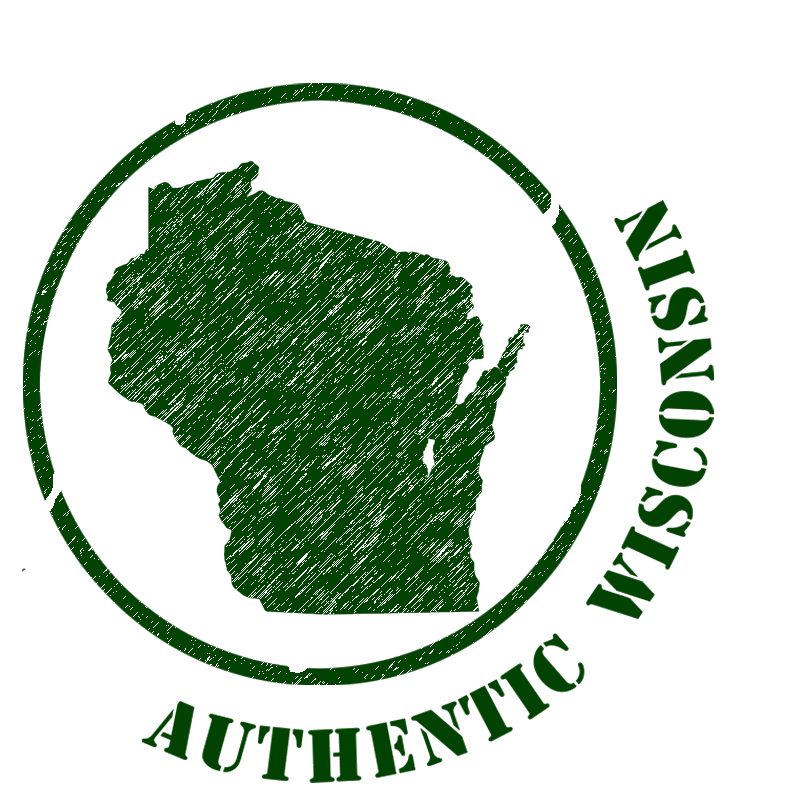 Madison, Wisconsin
Madison, Wisconsin
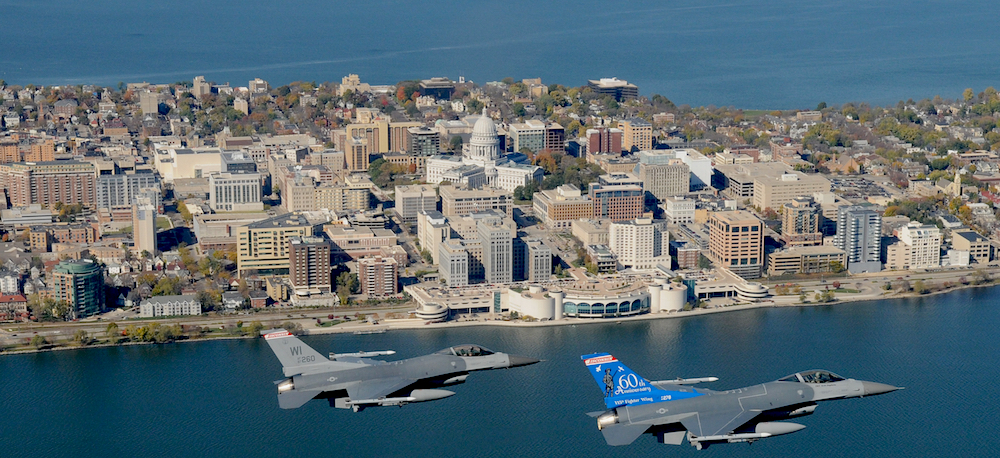
Above: ANG F-16 Fighting Falcons from the 115th Fighter Wing, Wisconsin Air National Guard over Lake Monona along the isthmus in Madison, Wisconsin on October 18, 2008.
Madison, Wisconsin - Founded in 1829 by judge, territorial governor, Congressman and land speculator, James Duane Doty.
Madison is the 2nd largest city in Wisconsin and is located on an isthmus between Lake Mendota and Lake Monona.
In 1836, James Doty convinced the territorial legislature to make Madison the new capital.
Madison is the Wisconsin State Capital and home to the University of Wisconsin - Madison.
Early History
Before Europeans, humans inhabited the area in and around Madison for about 12,000 years.
In 1800, the Madison area was Ho-Chunk (Winnebago) Country. The Native Americans called the area Te Jop e ja, meaning "the Four Lakes," or Taychopera (tay-cho-pe-rah),
a collective name for the four lakes (Mendota,
Monona, Waubesa,
and Kegonsa). Effigy mounds, which had been constructed for ceremonial and burial purposes over 1,000 years earlier,
dotted the rich prairies around the lakes (about 200 remain). In 1832, when the Black Hawk War ended, European settlers began coming to the area.
Madison Grows
The cornerstone for the Wisconsin capitol was laid in 1837 and the legislature first met there in 1838. On October 9, 1839, Kintzing Prichett registered the plat of Madison at the registrar's office of the then-territorial Dane County.
Madison was incorporated as a village in 1846, with a population of 626. When Wisconsin became a state in 1848, Madison remained the capital, and the following year it became the site of the University of Wisconsin (now University of Wisconsin–Madison).
The Milwaukee & Mississippi Railroad (a predecessor of the Milwaukee Road) connected to Madison in 1854. Madison incorporated as a city in 1856, with a population of 6,863.
Camp Randall in the Beginning

Above: Illustration of Camp Randall in 1864 taken from the state university. Kurz, Louis, 1833-1921, lithographer (Click on image to see larger illustration.)
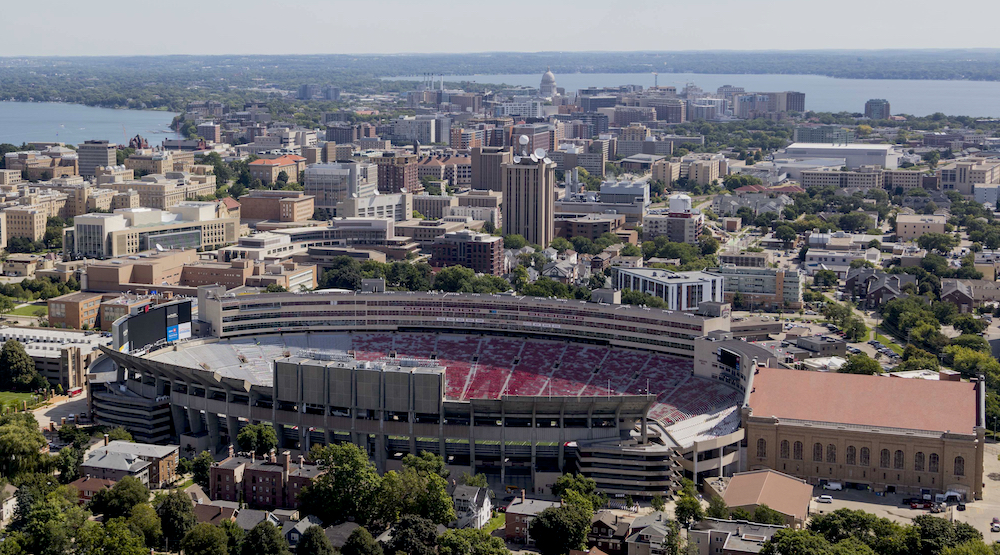
Above: (Photo from the Carol M. Highsmith Archive, Library of Congress, Prints and Photographs Division.)

Above: Photo of inside Camp Randall Stadium taken during the Wisconsin Badgers vs. Minnesota Gophers "Battle for the Axe" football game on 11/29/14. Photo by Bflbarlow [CC BY-SA 4.0], from Wikimedia Commons.

Above: 1867 map of Madison, Wisconsin (Click on image to view larger map).
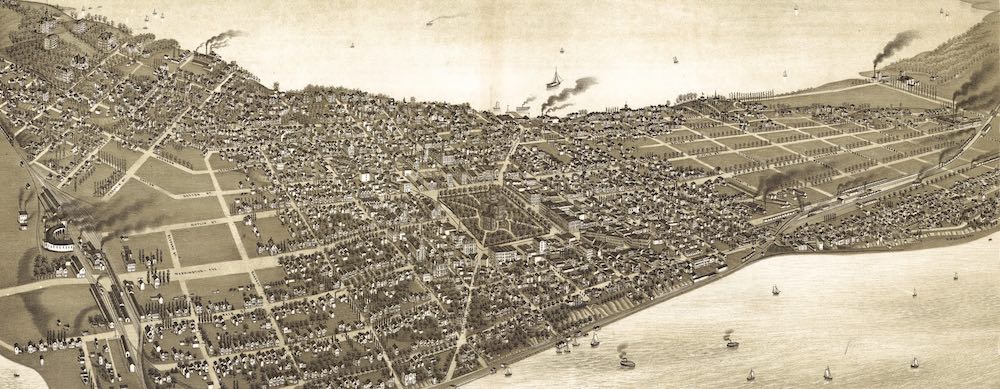
Above: 1885 map of Madison, Wisconsin (Click on image to view larger map).

Above: Panorama photo of Madison, Wisconsin taken from the Capitol building circa 1899 (Click on image to see larger and complete panorama.) Note: The State Historical Society of Wisconsin building at the base of Bascom Hill in front of Science Hall is almost completed. Designed by Ferry & Clas, the building was finished at the turn of the previous century in 1900.
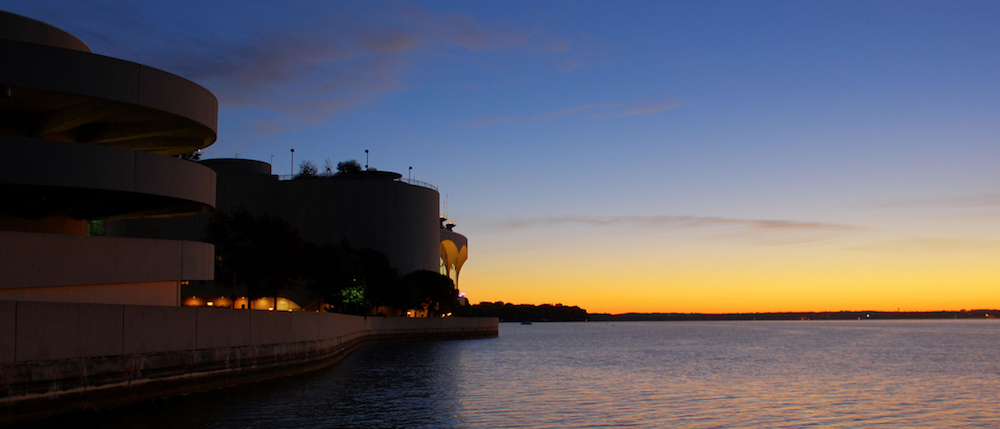
Above: Photo of Monona Terrace on the shore of Lake Monona in Madison, Wisconsin. It was first designed by Frank Lloyd Wright in 1938. Wright reworked the design several times between 1938 and 1958 before signing off on the final plans seven weeks before his death in 1959. Whereas Wright´s design was used for the building's exterior, the interior was redesigned by Wright apprentice and Taliesin architect Tony Puttnam.
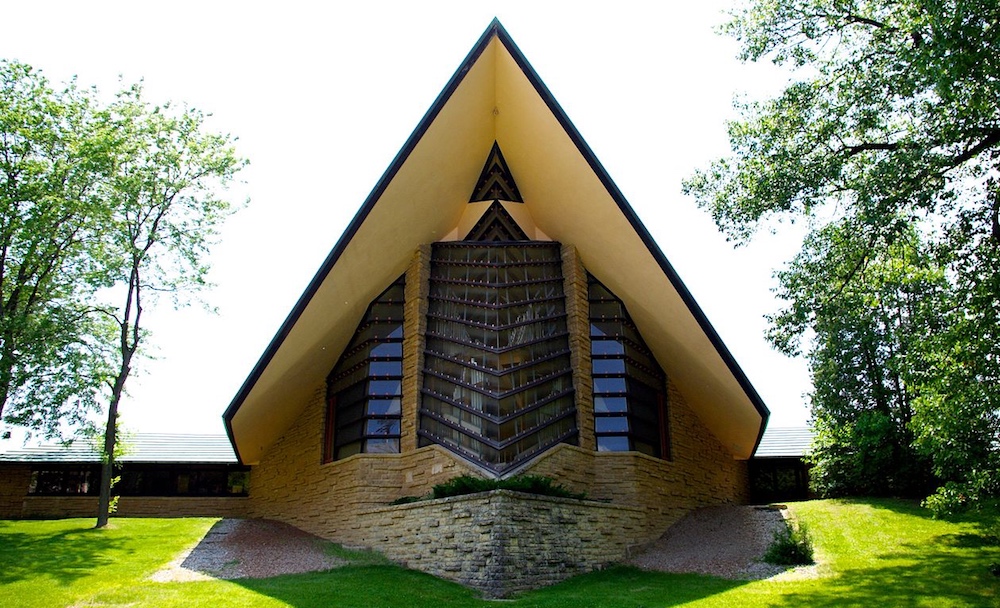
Above: Photo of Frank Lloyd Wright designed Unitarian Meeting House in Madison, Wisconsin. Photo by Nomadseifer [CC BY-SA 3.0], from Wikimedia Commons.

Above: Photo of MMoCA - The Madison Museum of Contemporary Art in the Overture Center in Madison, Wisconsin. Franco Folini from San Francisco, USA [CC BY-SA 2.0], via Wikimedia Commons.

Above: Photo of the main Overture Center entrance (the original Yost's Department Store facade) in Madison, Wisconsin.
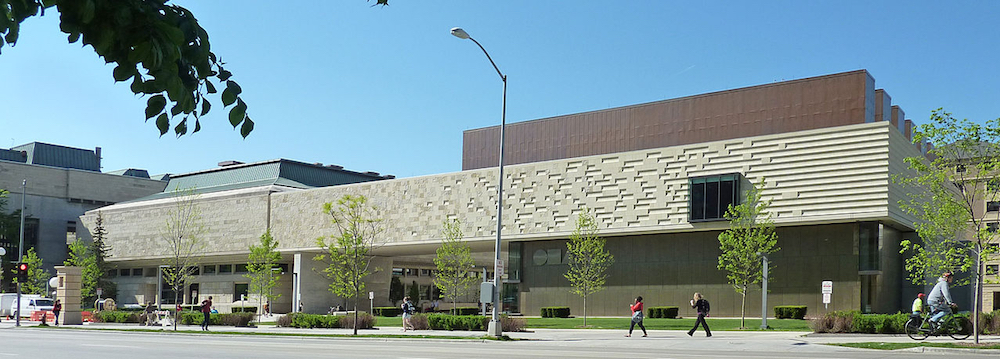
Above: Photo of The Chazen Museum of Art in Madison, Wisconsin. Photo by James Steakley [CC BY-SA 3.0 or GFDL], from Wikimedia Commons.

Above: Photo of the Bolz Conservatory at Olbrich Botanical Gardens in Madison, Wisconsin.


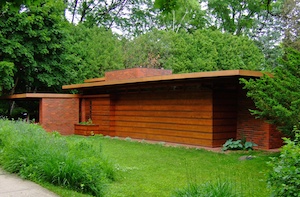
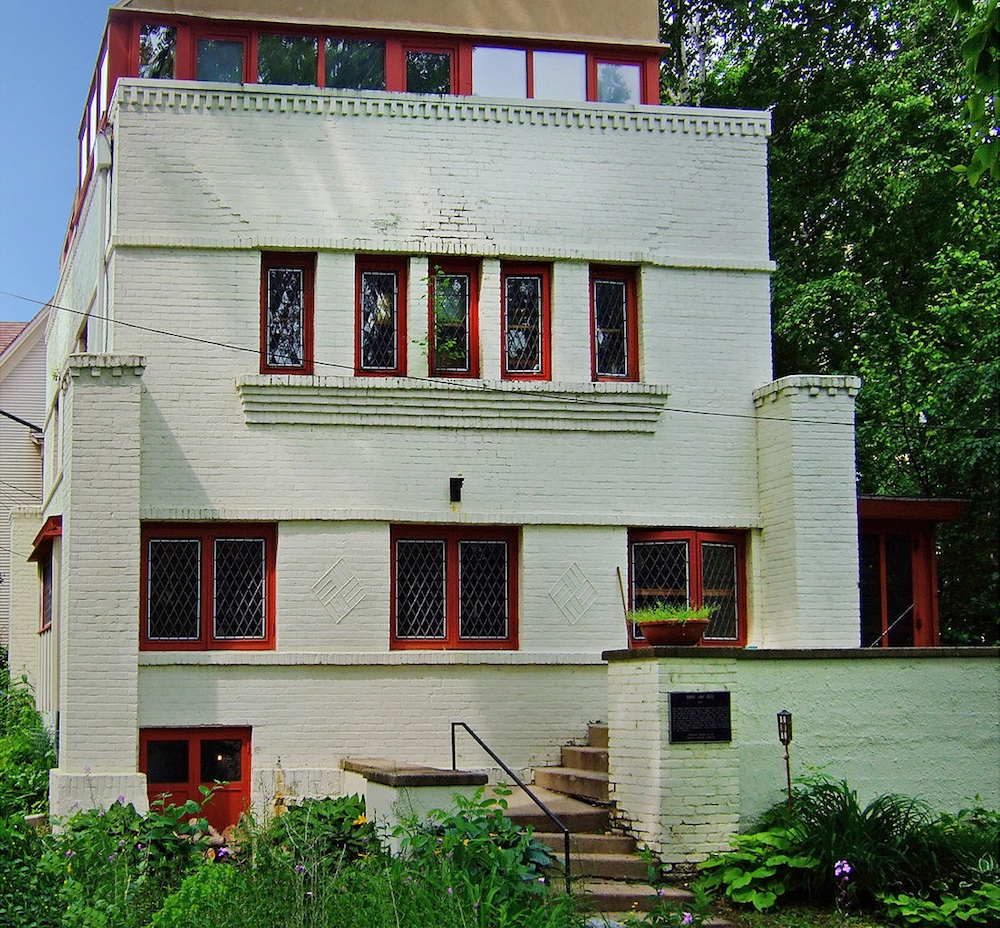
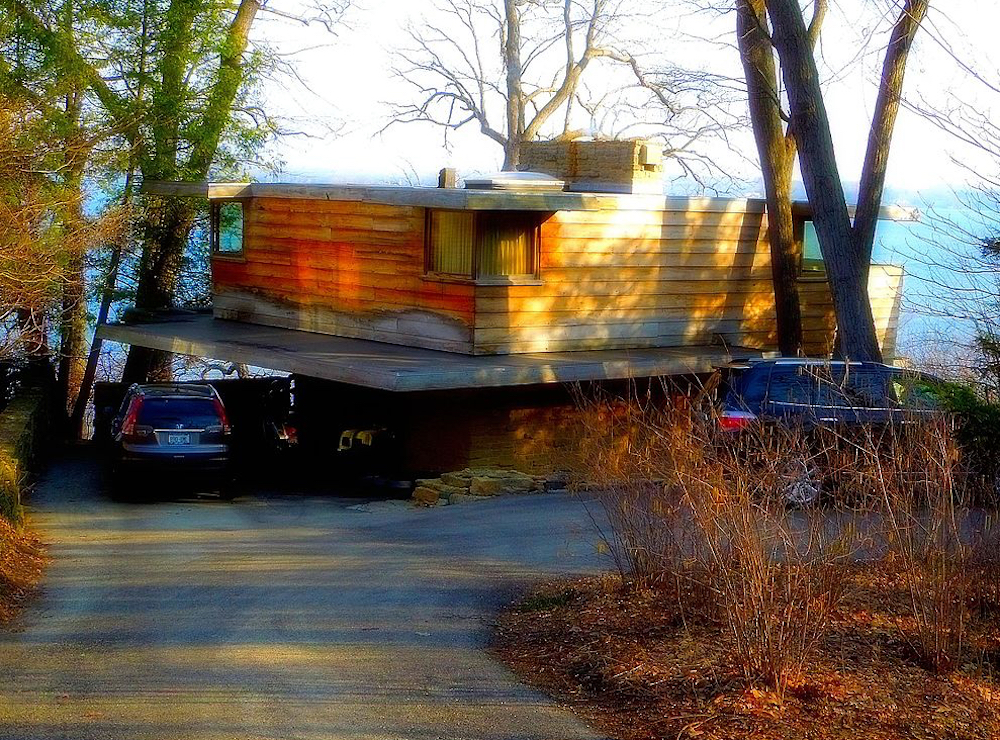
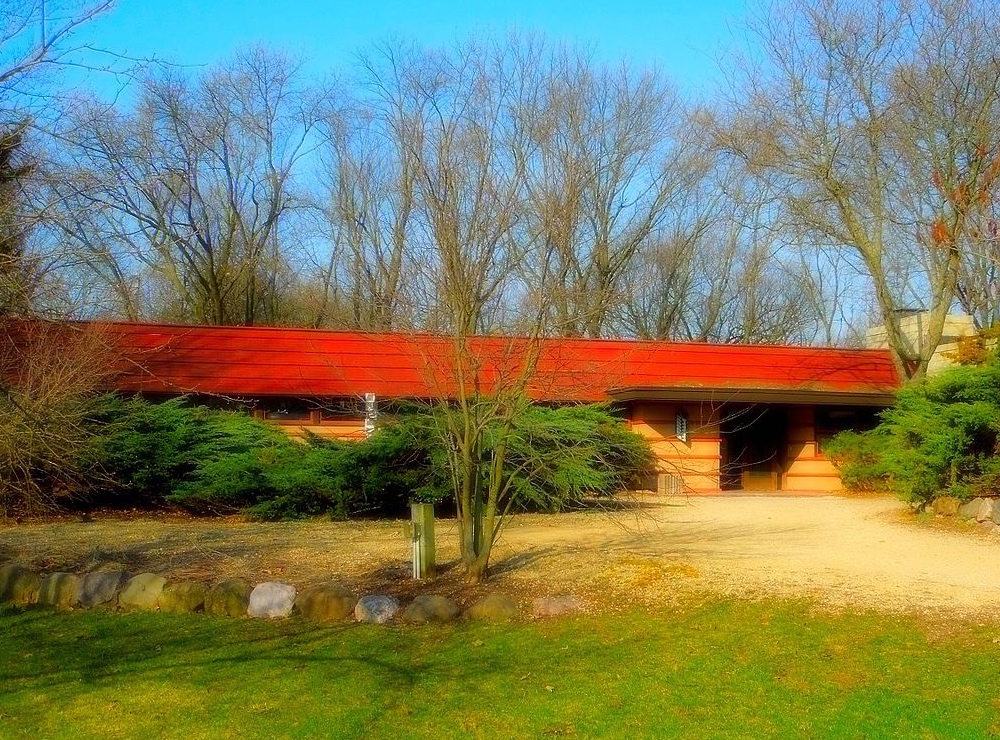
For more information on Madison, Wisconsin, visit Wikipedia.
Or, visit the Greater Madison Convention & Visitors Bureau website at: visitmadison.com.
Madison, Wisconsin
Dane County
Incorporated in 1848
State Capital
Named for James Madison, 4th President of the United States.
"30 acres surrounded by reality"
- Lee Sherman Dreyfus, Governor of Wisconsin (1979–1983)

Above: Madison, Wisconsin. Coordinates: 43°4′N 89°24′W
Nicknames:
Mad City
Madtown
City of Four Lakes
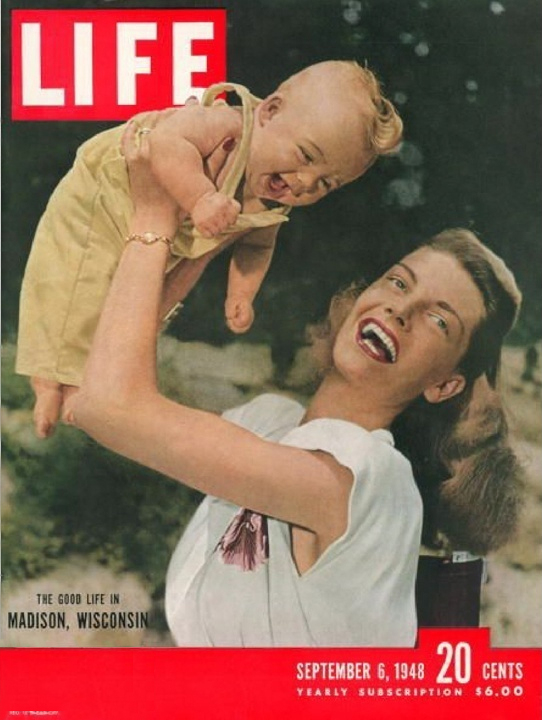
Above: The oldest brother of actor and Wisconsinite, Chris Noth, and mother, Jeanne Parr on the cover of LIFE Magazine (September 6, 1948). Perhaps the most famous magazine story ever written about Madison, Wisconsin.
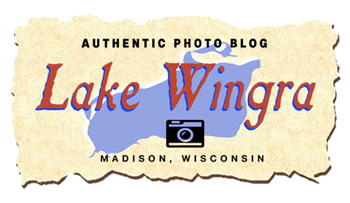

Above: Wisconsin State Capitol building. Construction on the present and third Capitol in Madison began in late 1906 and was completed in 1917.
Read more about the Capitol building by visiting capitol100th.wisconsin.gov

Above: The Statue on top of the State Capitol dome is not "Forward" but is officially named "Wisconsin" and has also been nicknamed the "Golden Lady." She stands 15 feet, 5 inches high and weighs more than 3 tons. In her left hand, she holds a globe with an eagle perched on it and on her head is a helmet topped with a badger. (Photo: RAHurd [CC BY-SA 3.0], from Wikimedia Commons)
)
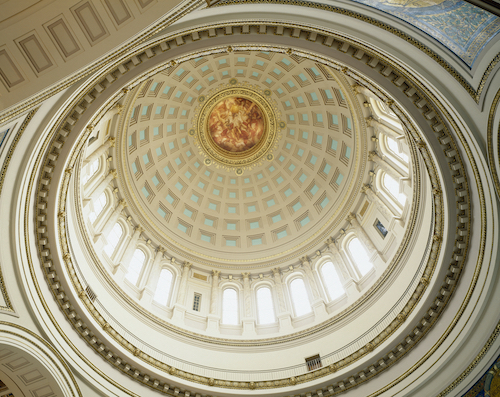
Above: Inside view of Wisconsin Capitol dome. (Photo from the Carol M. Highsmith Archive, Library of Congress, Prints and Photographs Division.)

Above: Edwin Howland Blashfield's "The Resources of Wisconsin" in the oculus of the Wisconsin Capitol dome. (Photo from the Carol M. Highsmith Archive, Library of Congress, Prints and Photographs Division.)
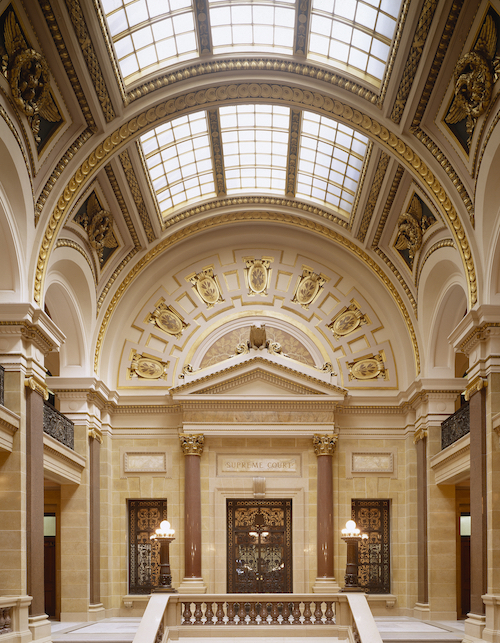
Above: Grand Hall of the Wisconsin Capitol (Photo from the Carol M. Highsmith Archive, Library of Congress, Prints and Photographs Division.)
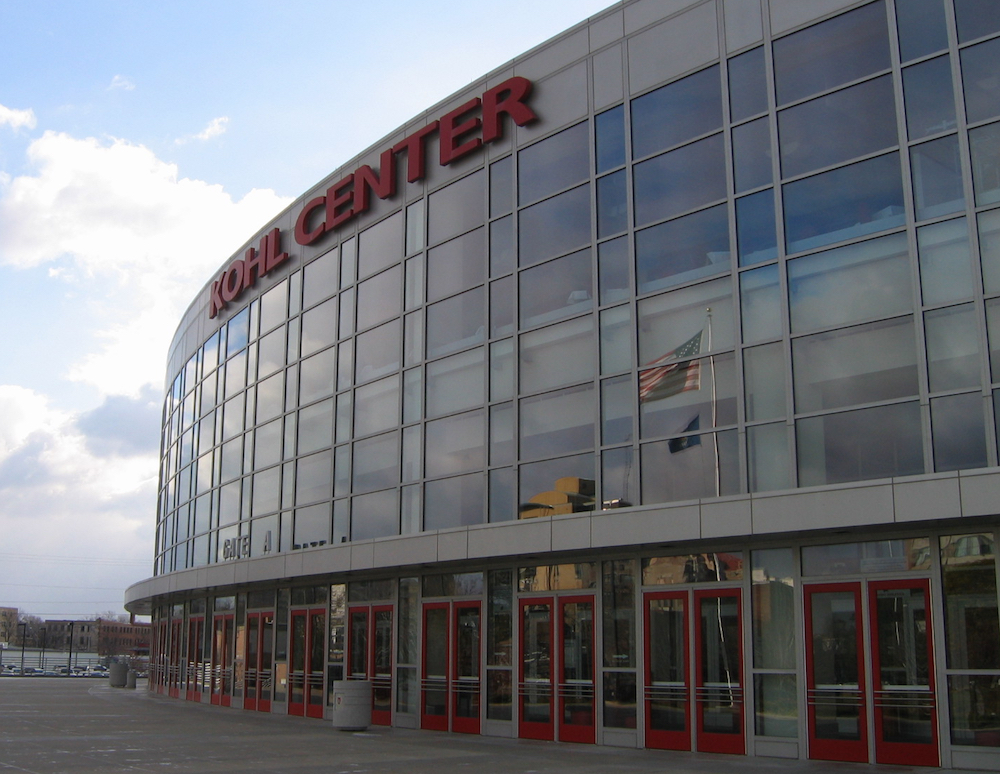
Above: The University of Wisconsin Kohl Center where the Badgers play hockey and basketball.

Above: The Red Gym on the University of Wisconsin campus (circa 1899).

Above: Bascom Hall on the University of Wisconsin campus.
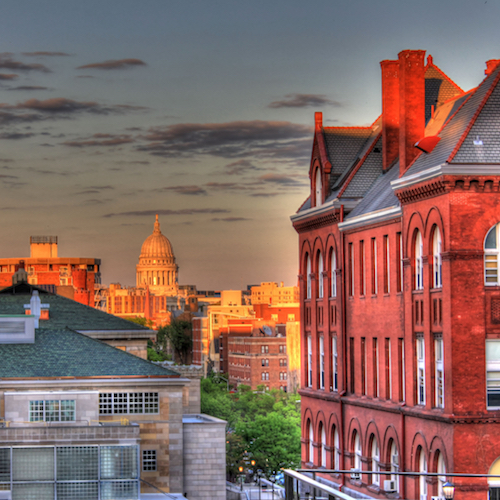
Above: The Wisconsin State Capitol building in the late afternoon as seen from Observatory Drive looking between the Memorial Union (left) and Science Hall (red brick building on right).
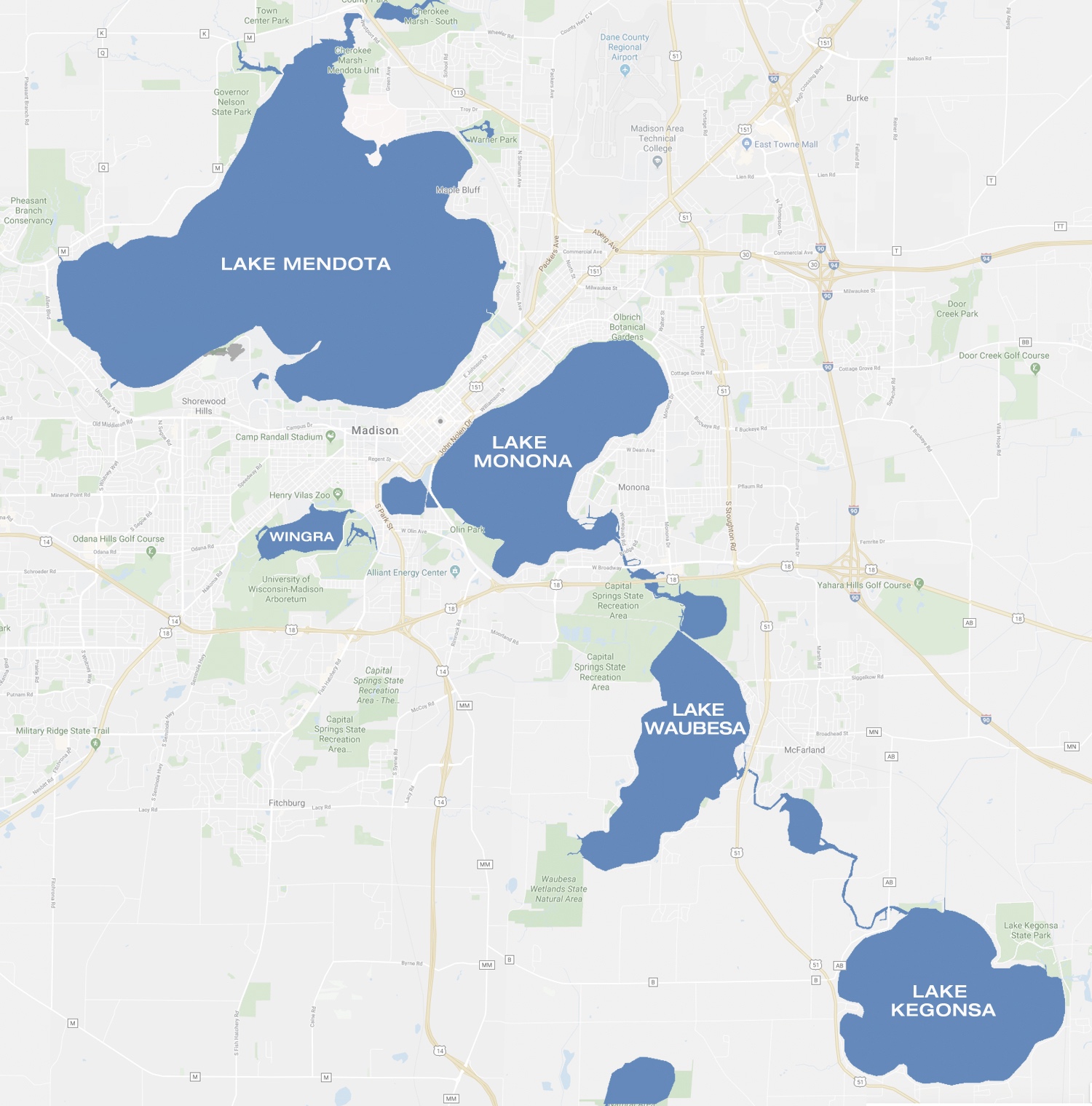
Above: Madison chain of lakes including Lake Mendota, Lake Monona, Lake Waubesa, Lake Kegonsa and Lake Wingra.
More Information

Above: Inside Overture Hall looking at performance stage and organ.

Above: The University of Wisconsin Arboretum.

Above: Camp Randall Memorial Arch built in 1912.

Above: Camp Randall canon. Photo by James Steakley [CC BY-SA 3.0 or GFDL], from Wikimedia Commons
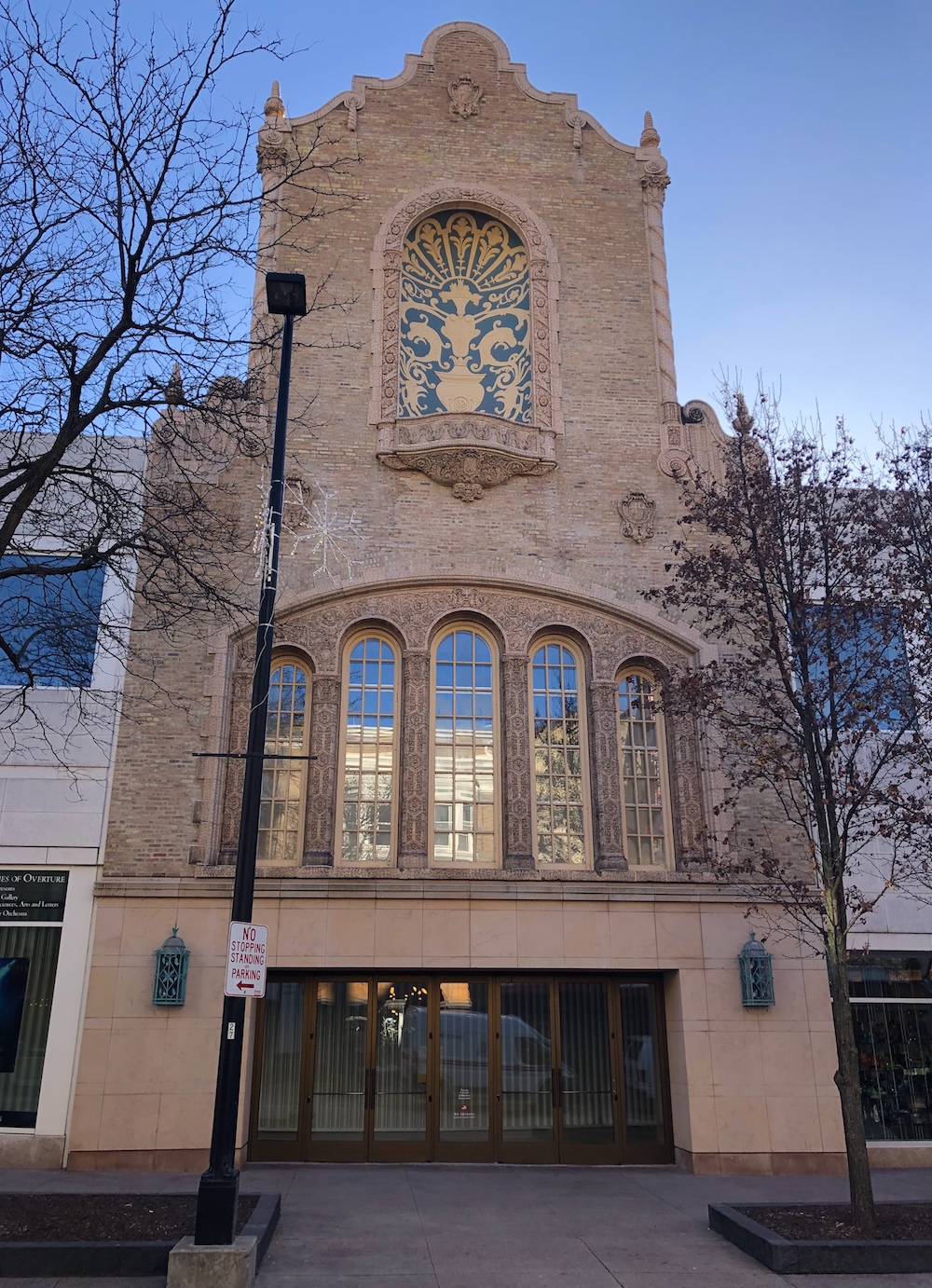
Above: Original Capitol Theater facade incorporated into the Overture Center.
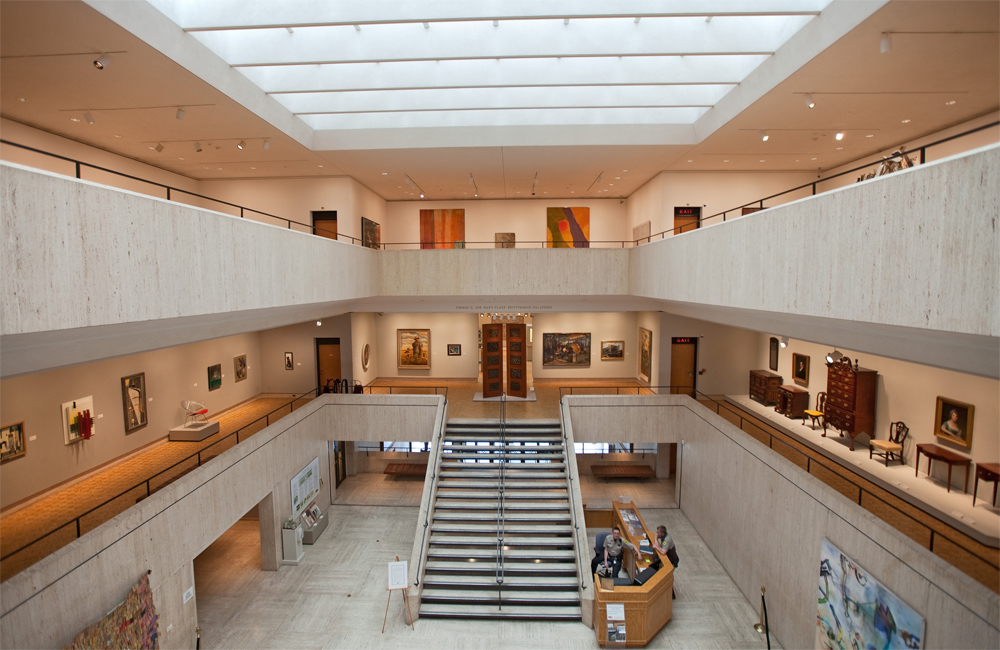
Above: Inside the Chazen Museum of Art in Madison, Wisconsin.Photo by John Benson from Madison WI [CC BY 2.0], via Wikimedia Commons.

Above: Window designed by Frank Lloyd Wright displayed at the Chazen Museum of Art.
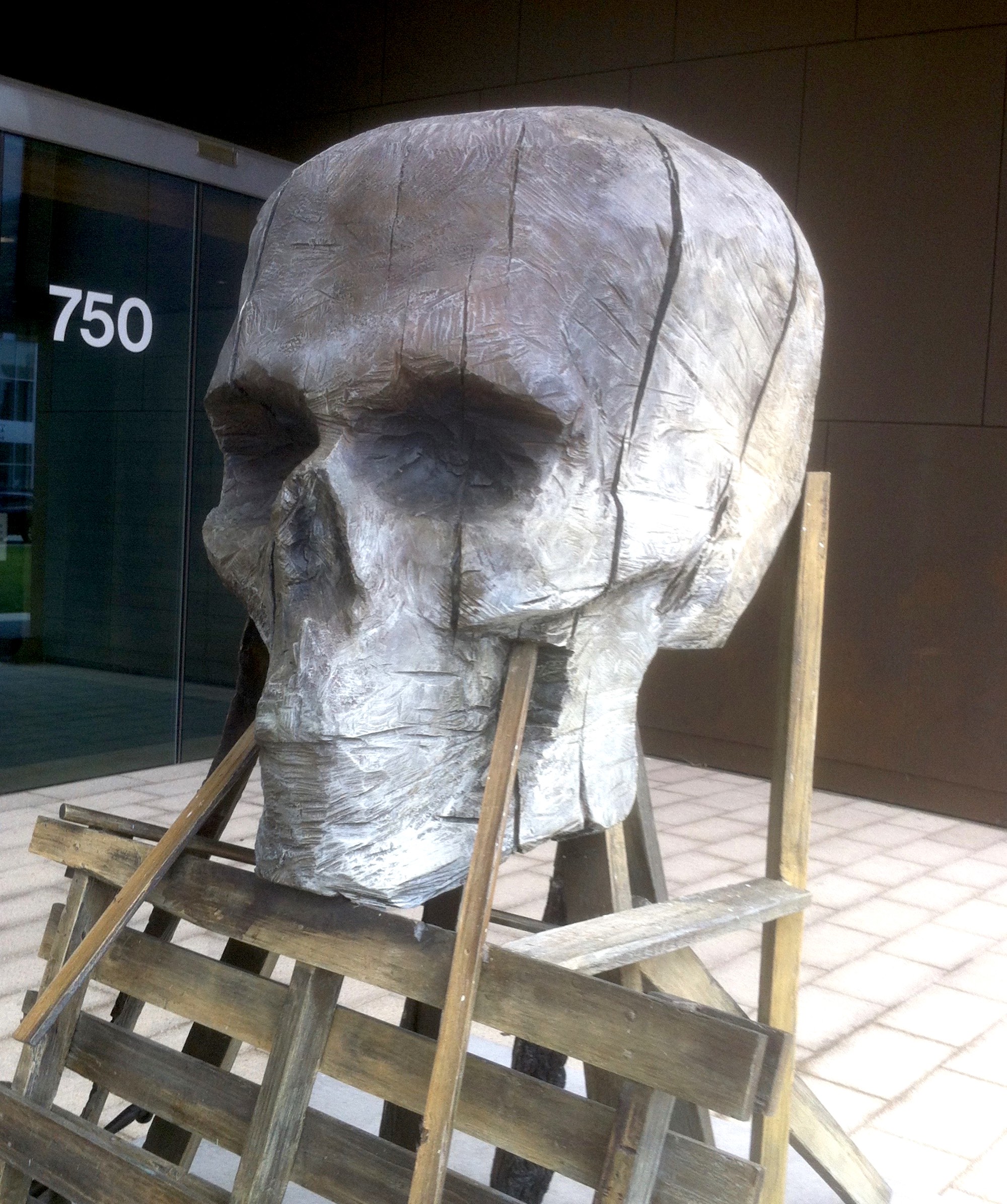
Above: Large wooden skull on display outside the entrance to the Chazen Museum of Art.

Above: Thai Pavillion at Olbrich Botanical Gardens.